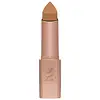What's inside
What's inside
 Key Ingredients
Key Ingredients

 Benefits
Benefits

 Concerns
Concerns

 Ingredients Side-by-side
Ingredients Side-by-side

Ethylhexyl Palmitate
EmollientIsononyl Isononanoate
EmollientDiisostearyl Malate
EmollientSynthetic Wax
AbrasiveCeresin
Emulsion StabilisingPolyisobutene
Silica
AbrasivePhenoxyethanol
PreservativeTocopheryl Acetate
AntioxidantCaprylic/Capric Triglyceride
MaskingCamellia Sinensis Leaf Extract
AntimicrobialCarthamus Tinctorius Seed Oil
MaskingCitrus Medica Vulgaris Fruit Extract
AntioxidantTrihydroxystearin
Skin ConditioningSodium Hyaluronate
HumectantGlucomannan
Skin ConditioningRosa Rubiginosa Seed Oil
EmollientIron Oxides
CI 77492
Cosmetic ColorantCI 77891
Cosmetic ColorantCI 77499
Cosmetic ColorantEthylhexyl Palmitate, Isononyl Isononanoate, Diisostearyl Malate, Synthetic Wax, Ceresin, Polyisobutene, Silica, Phenoxyethanol, Tocopheryl Acetate, Caprylic/Capric Triglyceride, Camellia Sinensis Leaf Extract, Carthamus Tinctorius Seed Oil, Citrus Medica Vulgaris Fruit Extract, Trihydroxystearin, Sodium Hyaluronate, Glucomannan, Rosa Rubiginosa Seed Oil, Iron Oxides, CI 77492, CI 77891, CI 77499
Isononyl Isononanoate
EmollientMica
Cosmetic ColorantPolyethylene
AbrasiveSynthetic Wax
AbrasiveNeopentyl Glycol Dicaprylate/Dicaprate
EmollientPolymethylsilsesquioxane
Talc
AbrasiveZinc Stearate
Cosmetic ColorantSilica
AbrasiveDimethicone
EmollientEthylene Brassylate
MaskingPentaerythrityl Tetra-Di-T-Butyl Hydroxyhydrocinnamate
AntioxidantPlukenetia Volubilis Seed Oil
EmollientPistacia Vera Seed Oil
Skin ConditioningHydrogenated Vegetable Oil
EmollientTocopherol
AntioxidantBHT
AntioxidantCI 77891
Cosmetic ColorantCI 77491
Cosmetic ColorantIsononyl Isononanoate, Mica, Polyethylene, Synthetic Wax, Neopentyl Glycol Dicaprylate/Dicaprate, Polymethylsilsesquioxane, Talc, Zinc Stearate, Silica, Dimethicone, Ethylene Brassylate, Pentaerythrityl Tetra-Di-T-Butyl Hydroxyhydrocinnamate, Plukenetia Volubilis Seed Oil, Pistacia Vera Seed Oil, Hydrogenated Vegetable Oil, Tocopherol, BHT, CI 77891, CI 77491
Ingredients Explained
These ingredients are found in both products.
Ingredients higher up in an ingredient list are typically present in a larger amount.
Ci 77891 is a white pigment from Titanium dioxide. It is naturally found in minerals such as rutile and ilmenite.
It's main function is to add a white color to cosmetics. It can also be mixed with other colors to create different shades.
Ci 77891 is commonly found in sunscreens due to its ability to block UV rays.
Learn more about CI 77891Isononyl Isononanoate is a synthetic skin-conditioner and texture enhancer. It is created from nonanoic acid, a fatty acid found in cocoa and lavender oil.
As an emollient, Isononyl Isononanoate helps keep your skin soft and smooth. This is because emollients create a barrier on the skin to trap moisture in.
Isononyl Isononanoate helps give products a velvet feel and improves spreadability.
Learn more about Isononyl IsononanoateSilica, also known as silicon dioxide, is a naturally occurring mineral. It is used as a fine, spherical, and porous powder in cosmetics.
Though it has exfoliant properties, the function of silica varies depending on the product.
The unique structure of silica enhances the spreadability and adds smoothness, making it a great texture enhancer.
It is also used as an active carrier, emulsifier, and mattifier due to its ability to absorb excess oil.
In some products, tiny microneedles called spicules are made from silica or hydrolyzed sponge. When you rub them in, they lightly polish away dead skin layers and enhance the penetration of active ingredients.
Learn more about SilicaSynthetic Wax is created from fossil fuels such as natural gas. It is used to enhance texture, adjust pH, and as an occlusive.
It may also be used as an abrasive ingredient to exfoliate the skin.
Synthetic Wax may not be fungal acne safe.
Learn more about Synthetic Wax